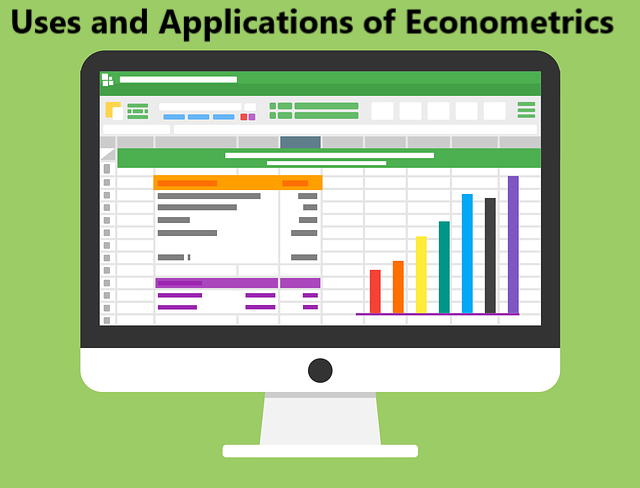Uses and Applications of Econometrics
Econometrics is the study of economic data and the testing of economic theories using mathematical and statistical methods. Some important uses and applications of econometrics are explained as follows:
1. Testing Economic Theories: Testing economic theories is one of the primary applications of econometrics. Econometricians create models that describe the relationships between economic variables and use statistical methods to estimate their parameters. Economists can determine whether data support the underlying economic theory by testing these models against real-world data. This can assist economists in refining economic theories and developing more accurate economic models.
2. Forecasting Economic Trends: Forecasting economic trends is another important application of econometrics. Economists can develop models to predict future economic trends by analyzing historical data. An econometric model, for example, could be used to forecast future inflation or economic growth rates. Policymakers and investors can use these forecasts to make proper decisions about the future.
3. Evaluating the Impact of Policies and Interventions: Econometrics can also assess the economic impact of various policies and interventions. An econometrician, for example, might use a model to estimate the effect of a tax cut on economic growth or a minimum wage increase on employment. Policymakers can use this data to assess the effectiveness of various policies and make proper decisions about promoting economic growth.
4. Policy and Intervention Impact Assessment: Econometrics can be used to understand complex economic relationships better. Economists, for example, might use a model to investigate the relationship between education and income or between trade and economic growth. Economists can gain insights into the economy’s workings and better understand how different factors influence economic outcomes by analyzing data on these relationships.
5. Identifying Causal Relationships: Econometrics can be used to determine the causes of economic variables. This is significant because many economic policies are intended to influence specific outcomes, and policymakers must determine whether these policies have the desired effects. Economists can identify the causal relationships between different economic variables by using econometric techniques to isolate the effects of specific factors.
6. Financial Instrument Pricing and Forecasting: Econometrics is widely used in finance to price and forecast financial instruments such as stocks, bonds, and derivatives. Using statistical methods, financial econometric models estimate the relationships between asset prices and other economic variables, allowing investors and financial analysts to decide which assets to buy, hold, or sell.
7. Risk Assessment: Econometrics is also used in financial markets to assess risk. Economists can develop models that estimate the likelihood of future events, such as a recession or a financial crisis, by analyzing historical data. Investors and policymakers can use this data to manage risk and make proper financial investment decisions.
8. Helps to understand Consumer Behavior: Econometrics can be used to understand consumer behavior better. Economists can develop models explaining how consumers decide what to buy and how much to spend by analyzing consumer spending, income, and demographic characteristics. Businesses and policymakers can use this data to create more effective marketing strategies and economic policies that better meet the needs of consumers.
- Econometrics & its Origin and Definitions
- Nature, Types, and Sources of Econometric Data
- Procedures of Econometric Modelling
- Uses and Applications of Econometrics
- Relationships between Econometrics, Mathematics, and Statistics
- Business Econometrics – Importance and Procedures
- Environmental econometrics – Meaning, Uses, and Procedures
- Estimation and Types of Estimation
- Properties of Estimators – Small Sample and Large Sample
- Ordinary Least Squares (OLS) Derivation






Please leave your comments or ask your queries here. The comments shall be published only after the Admin approval.